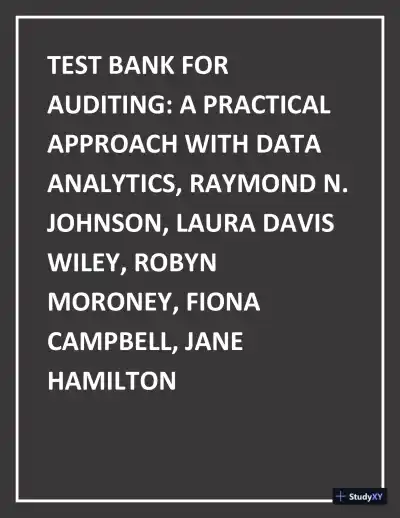Page 1

Loading page ...
Test Bank for Auditing: A Practical Approach with Data Analytics, 2nd Edition (Chapters 1-15) ensures you're fully prepared with expert-verified questions and solutions.

Loading page ...
This document has 453 pages. Sign in to access the full document!